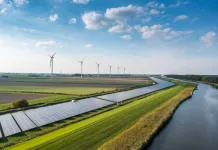In an eye-opening conversation with Tom Moloughney on State of Charge, Ford‘s Jim Farley unveiled the story behind a pivotal shift in the electric vehicle (EV) charging landscape. The shift saw Ford transition to using Tesla‘s North American Charging Standard (NACS) plug, steering a major change across the industry.
The Decision That Electrified the EV Market
Delving into Ford’s strategic pivot, Farley explained it was borne out of necessity. He recounted a driving experience in a Ford F-150 Lightning with his family, where the prevalence of Tesla Superchargers and the absence of his vehicle’s compatibility caused significant travel anxiety. This real-world dilemma fueled Farley’s resolve to bridge the gap between Ford’s electric fleet and Tesla’s efficient charging network.
The Turning Point: Sealing the Deal with Tesla
Aligning Ford with Tesla’s charging system involved tough decisions, including Farley’s direct appeal to Elon Musk. An emphasis on Tesla’s mission to accelerate the world’s transition to sustainable energy resonated, leading to an unexpectedly swift agreement. In just two weeks, contracts were drafted, setting in motion a collaboration that demanded considerable integration efforts from both teams.
Industry Reactions and the Move by Competitors
While Ford’s move may have surprised its competitors, it didn’t spur immediate backlash, Farley observed. However, it wasn’t long before other industry players, from GM onward, followed suit, recognizing the limited options at their disposal when confronted with the same charging infrastructure challenges.
A Shift in Charge Port Design and Location
Farley underscored the significance of changing to Tesla’s plug design beyond immediate charging network concerns. He highlighted the Tesla design’s contribution to reliability and hinted at a forthcoming reevaluation of charge port placements on future Ford models.
Commitment to Customers: Free Adapters
Addressing the initial uncertainty surrounding adapter costs, Farley affirmed that offering free adapters to customers was a purposeful branding strategy he championed, emphasizing Ford’s dedication to doing “the right thing” for their clientele.
Concerns Over Sales and Consumer Hesitation
In response to speculation that consumers might delay purchases waiting for NACS-native EV models, Farley indicated that affordability, rather than the charging standard, was the primary sales driver. He reassured that sales growth remained robust.
Privacy Practices and Customer Data
Farley was firm in ensuring customer data privacy, clarifying that data sharing wasn’t part of the Tesla deal. He guaranteed data protection under Ford’s stringent privacy guidelines, with the caveat that choosing to utilize Tesla’s app would necessarily involve sharing information with them.
An Interview Worthy of Attention
The interview revealed nuanced insights into Ford’s tactical decisions, which, while summarized here, are enriched by Farley’s firsthand narration. For a comprehensive understanding, viewers are encouraged to watch the full interview and draw their own conclusions from Farley’s detailed account.

























